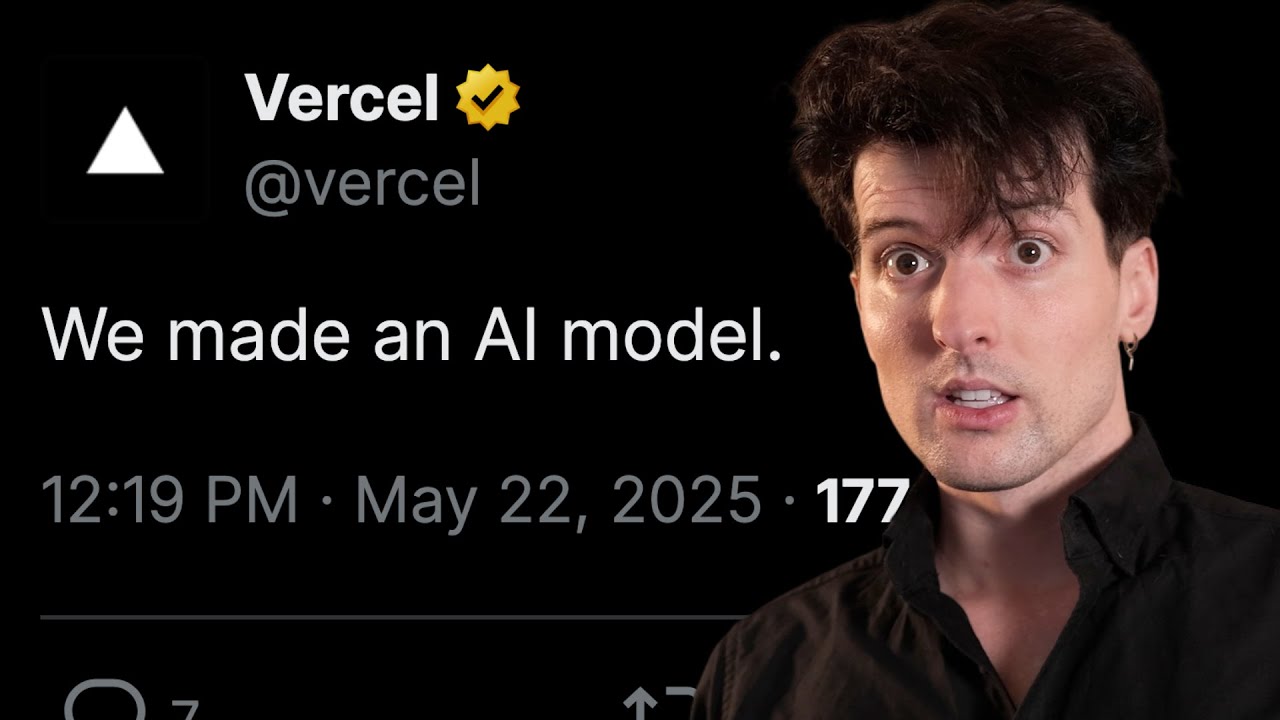The video highlights Vercel’s recent release of their own AI model, V0, which excels in generating high-quality, responsive UI code for modern web development, especially with frameworks like Tailwind and React. Despite limited details on its architecture, V0’s performance and strategic focus on control, data quality, and integration position it as a competitive and promising tool in the evolving AI coding landscape.
The video discusses the recent release of V0 by Versel, an unexpected entry into the competitive AI coding model space. The creator highlights that Versel has developed its own AI model, likely trained on vast amounts of code data and user feedback, to improve code generation and UI design. While details about the model’s architecture are scarce, the emphasis is on its ability to produce high-quality, visually appealing UI code, especially using frameworks like Tailwind and React. The timing of the release appears strategic, coinciding with the launch of Claude 4, to maximize impact and visibility in the AI community.
The presenter compares V0’s performance to other models like Claude 4 Sonnet and GPT-4. He tests the models by generating a simple homepage layout, noting that V0 produces more responsive and detailed outputs, with longer and more structured code. The model is designed specifically for building modern web applications, supporting text and image inputs, fast streaming responses, and compatibility with OpenAI’s API format. Features like inline editing, automatic fixing of common coding issues, and multimodal capabilities (such as image generation) are highlighted as key strengths.
The motivation behind Versel creating its own AI model is explored in depth. The company aims to improve output quality and relevance by leveraging curated, high-quality data and user feedback, including thumbs up/down metrics. Unlike larger companies relying on third-party models like Anthropic or OpenAI, Versel seeks more control over the model’s behavior, especially to better support their innovative web development tools and frameworks. They also want to refine their models to better understand and utilize new web technologies, reducing hallucinations and errors common with generalized models.
The video emphasizes the importance of tools, system prompts, and user prompts in shaping AI outputs. While system prompts and tool calls have become commoditized and less differentiating, the focus is shifting toward refining the actual outputs through better data, feedback, and model training. Versel’s strategy involves covering the entire spectrum—from model creation to tool integration and prompt engineering—to ensure their AI can generate high-quality, reliable code across various platforms and tools like Cursor, VS Code, and others. This comprehensive approach aims to give them a competitive edge in the evolving AI development landscape.
Finally, the presenter reflects on the broader implications of Versel’s move, noting the increasing competition among AI companies to produce the best coding models. With giants like Anthropic and OpenAI investing heavily in similar capabilities, the space is highly valuable and rapidly evolving. Versel’s focus on full-stack, Tailwind-based web development, combined with their data-driven refinement approach, makes their model a compelling first entry. While the high cost is a concern, the potential for creating a dominant AI tool for web developers makes this a noteworthy and exciting development in the AI coding ecosystem.
